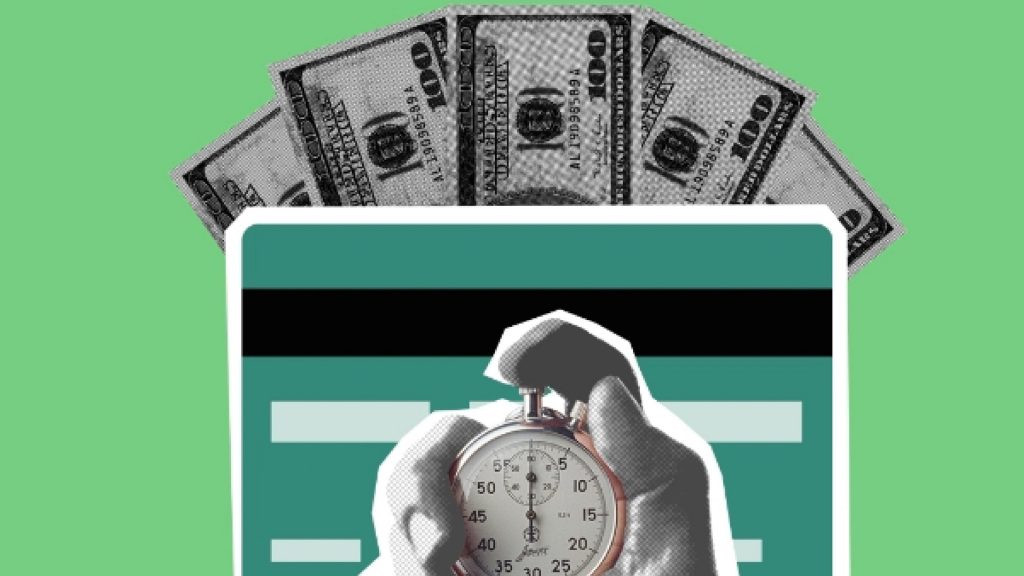Table of Contents
Some Basics First!
Blockchain Lending uses blockchain based underlying programs which is a technology popularized in the year 2008 by an anonymous group named Satoshi Nakamoto. It took Bitcoin to reach the cryptocurrency market to draw attention to Blockchain as a technology. It was only when people began to understand how technology is used daily, and its importance so blockchain services became popular.
Soon after Satoshi Nakamoto gave Bitcoin to the world, the cryptocurrency delivery system and platforms built on the blockchain platform followed. Ethereum, an intelligent contract manager; Bitcoin turn-out Litecoin; and real-time maintenance system, Ripple, are some of the most popular and invested cryptocurrencies on platforms today. However, the advent of cryptocurrencies and related media has primarily covered blockchain technology’s vast potential with ideas for the financial world and Fintech in particular.
Why Blockchain is essential: A business is going with information. The sooner he got it with his teaching, the better. Blockchain likes to transmit information because it provides immediate, shared, and transparent information stored in a measurable database that only network members can access. Blockchain can track orders, payments, reports, production, and much more. But because members share the same idea of reality, you can eventually see all the business details, giving you more confidence and new performance and opportunities.
Blockchain Lending & Fintech.

Of all the successes that cryptocurrencies have gained, such as bitcoin and ether, including digital currency, millions of dollars may return more than 1000%. It is silent in the background, undermining trust and safety in business and removing agents to provide lower business costs for end-users. There are many technologies. It is as versatile as creating multiple applications that can manage scalability, security, price, and reliability.
Blockchain, also known as Distributed Ledger Technology (DLT), can breathe new life and create new systems in the surrounding industry for decades or even centuries, as fintech did for small business loans and the private credit department, which was a hit when the 2008-09 crisis was minor.
Despite the benefits of fintech and the projections of experts that the industry will grow to reach billions of dollars in financing through P2P lending platforms, the fintech industry is not ready to achieve its goals. In 2014, the sector is filing some issues like high default rates, fraud, and regulatory issues and has suffered a 12% loss in online P2P lending just because of fraud.
Here, Blockchain can help processes more secure and reliable, given distributed ledger technology. A blockchain enables two parties to record their transactions in an efficient, unchangeable, and verifiable manner. It provides a strong barrier against unauthorized access and helps prevent fraud, one of the biggest problems threatening the rapid growth and expansion of the fintech industry.
By putting their digital assets, such as financial data and contracts, into a blockchain, fintech companies can curb fraud and identity theft problems by restoring transparency between customers, vendors, companies, and employees.
According to a World Economic Forum report, 10% of global GDP will be stored in a blockchain by the year 2025. This figure shows the possibilities of the technology and what it can do, not only for the financial sectors but for all sectors together, if used correctly and optimally.
Merging Blockchain and alternative lending can simplify and streamline online lending and help expand its capabilities by assisting them in integrating the ultimate blockchain function.
Alternative lending through Blockchain.
The alternative credit sector and online lending, in general, will benefit significantly from blockchain technology features. The decentralized public ledger is one of the best features that can introduce significant reforms in the industry, eliminating the common fraud that has so far plagued the industry.
This decentralized ledger can track fraudulent databases and payments in real-time. Each transaction made through the Blockchain is given a unique timestamp, making each transaction unchangeable and decreasing the chance of data being misrepresented.
With the advent of Ethereum, which enables the use of smart contracts based on the ERC-20 standard, the old documentation of legal agreements will also be taken over by a blockchain very soon. This will help lenders access transparent and unchanged repayment data, reducing the likelihood of fraud.
As the next step to integrating a blockchain into online lending, some companies are digitizing collateral such as country securities and centralizing them for public use. More and more lenders are looking for ways to minimize risk in their value chain. When it comes to the adoption of Ethereum contracts, Escrows and Settlement transactions are already very advanced.
Blockchain Lending & Real Estate.

Understanding: As mentioned earlier, the blockchain timestamp doesn’t allow you to change all contracts and transactions. This will help develop government institutions, companies and factories, and investment trust, and regulators, knowing that the data they are examining is accurate.
Decentralization
In Decentralized exchange, hacking is rare. In a traditional economy, lenders have been using their centralized cloud or home servers to store all the required data for some time. These include company data, customer data, and suppliers.
In the concept of these programs, sensitive data and information does not seem to comply with the cloud security norms or even physical servers when it comes to the database. Bad community characters have a lot of potentials to gain information about creditors stored on their centralized servers, such as personal information, social security numbers, bank details, etc. if hacked. We all have heard about various information leak scandals already, and that is because all that being vulnerable to being stored under a single stronghold and at the same time single point of failure.
Blockchain solves this problem by preserving information from a non-usable general ledger. Because business, service, contract, and data records stored across all networks are shared, it gives access to all nearby records. Only they can use the appropriate keys, access, and manage and view the information stored in the Blockchain. This strengthens the security system.
Easy to handle
The introduction of Blockchain, a cost-effective strategic plan, offers an excellent opportunity for other large and small lenders. While large lenders will want to use technology that provides a massive advantage in governance, small companies will benefit greatly from scalability and cost features when they plan to incorporate it into their system. Also, the intuitive functions allow potential users to find the required information through the platform, through the public viewing platform, without risking the entire database.
Digital identification
Blockchain does not run the risk of identity theft, which is a significant element of online loan fraud. Online lending has removed the requirement that a lender and a borrower must ever perform in real life, common in traditional banking. The first eliminated the need for long, physical checks, thus shortening the issuance and repayment of loans.
In the fintech industry, the opportunities to develop online lending at the macro level and the micro-level are gigantic due to the Blockchain’s integration. The disruptive functions it creates are easily recognized and accepted by industry stakeholders. Fintech has combined some of the impressive features of the Blockchain to help:
- Ultimate monitoring of the life cycle of financial transactions.
- Create affordable financial products.
- Invent theologically advanced financial services.
With blockchain lending, traditional banking services are obsolete, and reliance on external intermediaries is eliminated. This automated, decentralized system significantly reduces operational risks and speeds up the lending process.
By following the rules, blockchain technology can alleviate stress even in financial uncertainty, preventing cases such as the 2008 financial crisis. Overall, the Blockchain lends confidence, trustworthiness, and confidence to the complex lending process.
Home Loan Management

Under home loans, a blockchain can condense the lengthy complicated mortgage process by removing third-party intermediaries, certificates, and inherent processing delays. This can fully improve the lending process by reducing costs, developing indestructible records, and facilitating a quick solution for all concerned parties.
Origin of home loan management
First, the individual known as a borrower applies for a new loan. This application is then sent to a creditor for processing. A standard procedure among all loans, this initial step can be improved by accurate records using blockchain technology. Lenders also receive detailed breakthrough access to loan information and data about their lead generation process.
Fulfilment in home loan
When the loan is repaid, the lender gives estimates on the amount of the loan and gives the loan itself. Blockchain can speed up this process by providing estimates and details on the receipt of time-stamped documents within 3 days.
Blockchain in compromising home loans
When closing a loan, it is necessary to present some documents on the part of the borrower, which emphasizes this complex process. With smart contracts with a blockchain, loan closure can be accurately accelerated.
Blockchain helps service providers
The service occurs when the lender collects interest, principal, and deposit from the borrower. As a complex exchange of information and money, service can be enhanced by using the Blockchain with increased tracking of payments, increased data accuracy within credit transfers, and moving assets to service providers due to blockchain validation.
Secondary Markets
In the typical borrower’s eyes, the secondary market provides space for loans to be bought and sold by various lenders and investors. Due to increased distrust due to the recession in 2008, Blockchain is an extremely transparent property and can simplify many transactional processes.
For example, smart contracts can be implemented in major service agreements, investment contracts, and collaborative and service agreements that are not easy to manage and see in the chain. Blockchain’s automated, instant information update further ensures the security of secondary market transactions.
Conclusion

Blockchain technology is revolutionary. It makes life easier, safer and changes the way personal data is stored and how businesses and services are provided. Blockchain technology ensures permanent and unchanging registration of all transactions.
Blockchain is still evolving and emerging technology; it is difficult to predict how effective this would be outside of any proven use of cryptocurrencies. History teaches us that radical new technology takes many years to reach its full potential. So Blockchain will be revolutionary in the coming years, despite the gaps so far. Companies certainly need to look at and understand this technology because the ideas behind it are very powerful and likely to make an impact.
SoluLab is one of the top 3 blockchain developers in the world. Reach out to us today for your project’s free consultation.




